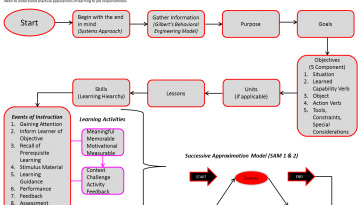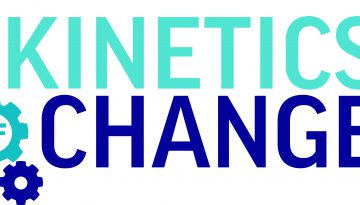As an instructional designer, it is prudent to have a methodology in place to design effective instruction. Recently, I reviewed several design resources which have helped to shape the methodology that I employ as a designer: Leaving ADDIE for SAM: An Agile Model for Developing the Best Learning Experiences by Michael Allen Principles of Instructional… Read More
Architectural Design, City Planning, and Instructional Design Connections
As an instructional designer, it is only necessary and proper that one reads about andragogy, multiple intelligence theory, and instructional strategies for engaging different learning styles. It is also incumbent upon an instructional designer to become skilled at writing course goals and objectives, presenting course content, and facilitating the learning process. While knowledge and application… Read More
Do you want to get better at leading change?
We are excited to announce that, in partnership with Tiffany Wulf of Parker Wulf Consulting, we are offering our first Kinetics of Change workshop! The one day workshop is called “The Non-Negotiables: Laying the Foundation for Change Success” and is targeted towards people who want to learn how to implement a successful and sustainable change…. Read More
A Recipe for Effective and Engaging Instruction
Growing up in an Italian American family, one of the things that I learned from my forbears was how to prepare a pasta sauce. To cook a good sauce, there are some fundamental ingredients that one must incorporate in order to make it appetizing: olive oil, garlic, tomatoes, basil, oregano, salt, and pepper. There is,… Read More
Change Everything by Replacing “But” with “And”
Years ago, I worked with a consumer products company that was trying to change the culture of their sales organization. They were trying to get their sales force to become more “consultative” and less “transactional” in interacting with customers. Account managers were retrained in listening, identifying opportunities, engaging in mutual problem solving and ideation, and devising potential… Read More
The Integration of Project Management and Change Enablement
Change Enablement should be treated as an integral part of the overall project approach. The most successful projects are ones where change resources are engaged from the beginning of the project and change plans are tracked within the overall project work plan. This helps the project manager and executive sponsors understand the entire scope of effort, coordinate key… Read More
What Works for Pens and Toilet Paper doesn’t work for Consulting
I’ve been there, on the client side. Facing a large project, or other seemingly Herculean effort, I was consistently advised to use the company’s procurement department to help me find the right consulting partner. Inevitably, the request for proposal (RFP) process thrust upon me failed to yield any worthwhile potential partners. Now that I am on the… Read More
When leaders lead effectively, amazing things happen…
Leaders can’t drive change alone. They must use their influence as a lever to incite action among followers. They have to direct where it matters most, and then relinquish control elsewhere so that others are empowered to make things happen. It is a delicate balance, but when leaders lead effectively, those around them… Sit up and… Read More
You Cannot Be Anything You Want, Even If You Work Hard Enough…
From 2007 to 2012, I dedicated five years of my life to becoming an effective social studies instructor. All through the education coursework, the classroom observations, the student teaching, the substitute teaching assignments, and the full time teaching and coaching positions, I observed on numerous occasions administrators, teachers, coaches, and other practitioners of secondary education… Read More
Moving from Taylor to Liquid Organizations
In 1911 management expert Frederick W. Taylor (The Principals of Scientific Management) pioneered the idea of dividing an organization between thinking people (managers) and executing people (workers). As a business management model, Taylorism improved economic efficiency and productivity by establishing a paradigm in which the decision making was the province of the thinking people, and… Read More





